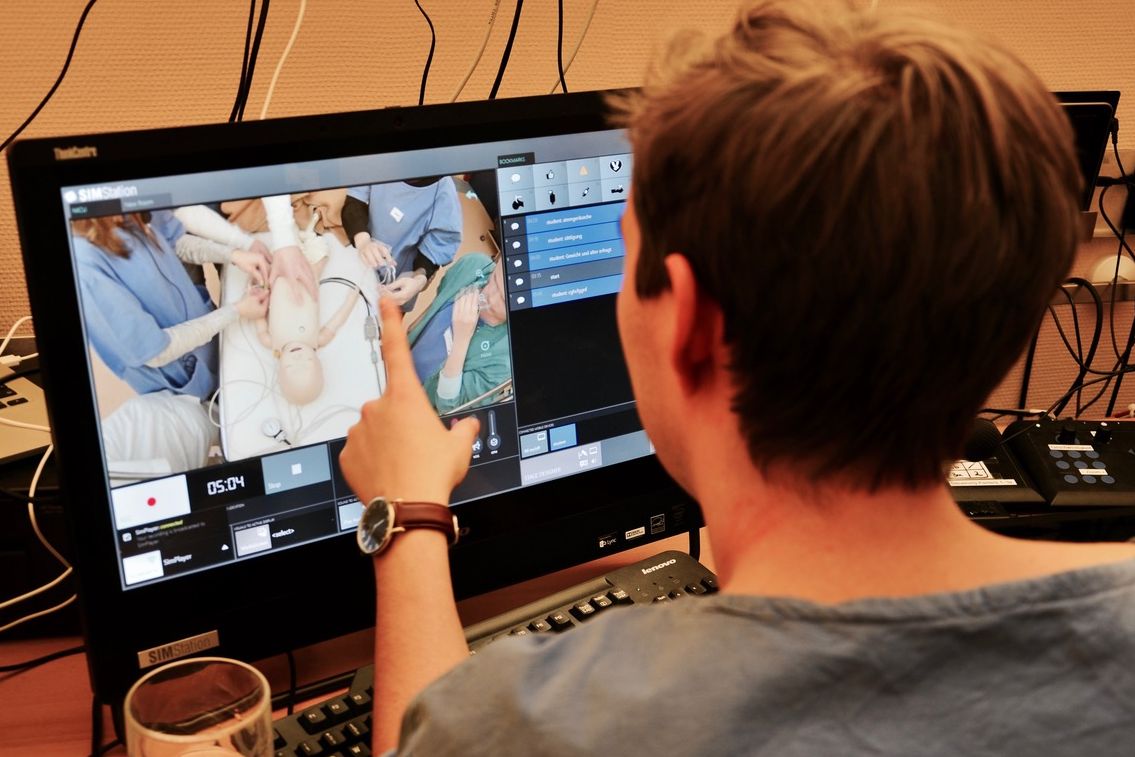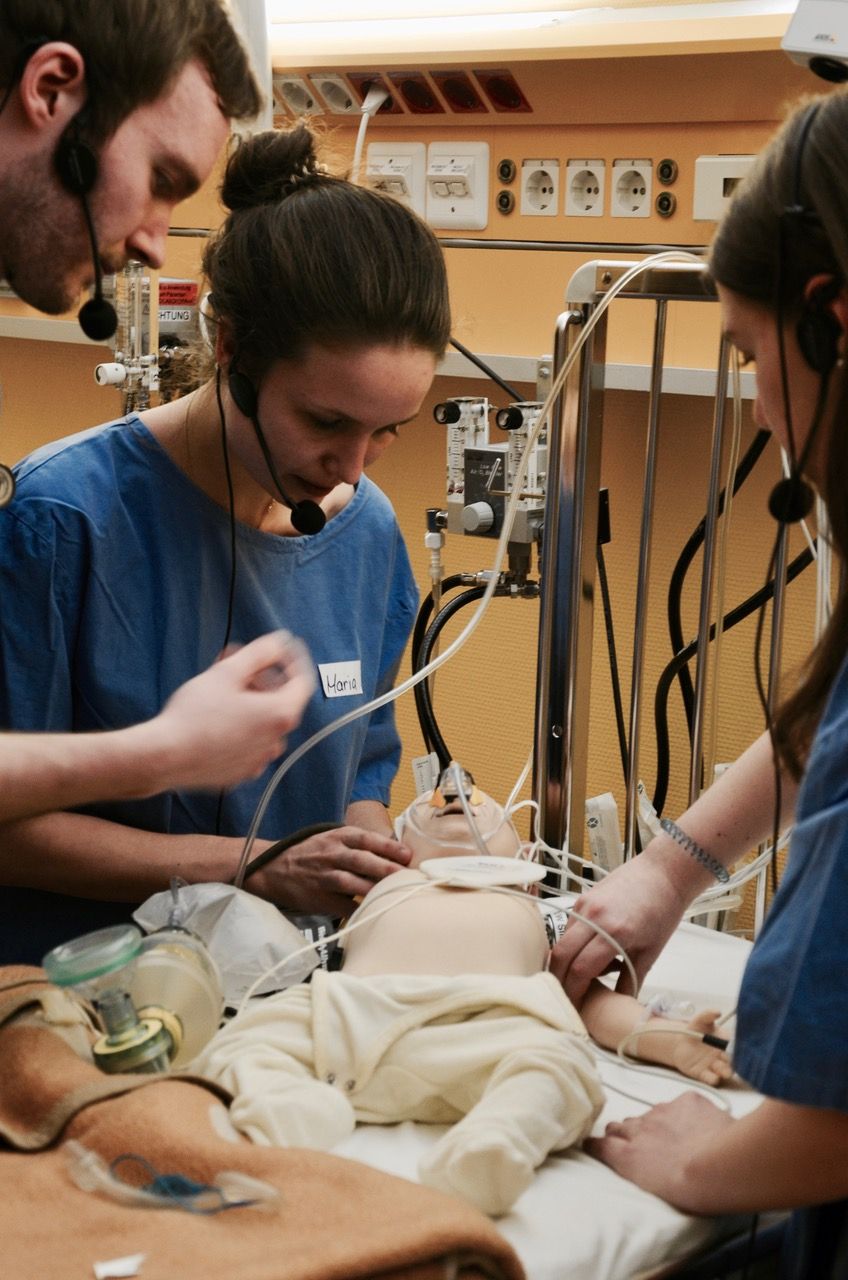
(Vienna, 07 February 2017) Since the winter semester of 2016, inter-professional simulation training has been taking place at MedUni Vienna’s Department of Pediatrics and Adolescent Medicine, with students from the Medical University of Vienna and trainees from the School of Paediatric and Adolescent Nursing at Vienna General Hospital. These training exercises provide simulation training focusing on paediatric medical emergencies and are supervised by an inter-disciplinary team comprising a lecturer in healthcare and nursing and a doctor.
Michael Wagner from MedUni Vienna’s Department of Pediatrics and Adolescent Medicine, who heads up the project, explains the rationale: "Mastering critical situations in paediatrics, requires experience, routine and a well-trained and practised team. Medical simulation enables us to gain experience at an early stage and in a protected environment, so that a medical professional’s first experience of an emergency is not a real one.
A brief introduction on the subject of critically ill children is followed by practical training on the simulation dummy. Paediatric emergencies are practised on the "SimBaby" in the simulation room at the Department of Pediatrics and Adolescent Medicine. The scenarios are videoed and then discussed, using video analysis and structured evaluation (debriefing), with the focus on communications and teamwork.
Doctors and nurses are already training together at the hospital but, so far, only medical students have taken part in simulation training as part of their courses. However, since it is precisely this inter-professional collaboration, in the sense of good communications, teamwork, etc., that is so important for patient outcome, medical students and healthcare and nursing trainees are now starting to train together in this pilot project, with the emphasis on these "human factors" rather than just purely medical content. Running concurrently with their theoretical training, the project provides an opportunity to put this theory into practice at an early stage, in order to optimise the interaction between the two professional groups, thereby providing a solid foundation for when they start work in the future.

Around 70% of incidents that occur in emergency situations and lead to poorer outcomes are attributable to "human factors" rather than to any lack of specialist knowledge (Hunt EA, Walker AR, Shaffner DH, Miller MR, Pronovost PJ. Simulation of in-hospital pediatric medical emergencies and cardiopulmonary arrests: highlighting the importance of the first 5 minutes. Pediatrics. 2008;121(1):e34-43.2).
This underscores the importance of offering this kind of simulation training to as many aspiring doctors and healthcare and nursing trainees as possible. This training is not only a good way of linking theory with practice but provides direct evidence and experience of the consequences of smooth inter-professional collaboration upon patient outcome. Skills are practised and expanded, communication skills are refined in an emergency situation, sources of error are identified and reflected upon accordingly. Themes are addressed, which have hitherto only played a minor role on the study courses but are actually very important.
"Our experience so far has far exceeded our expectations," reports Michaela Bilir, Director of the School for Paediatric and Adolescent Nursing, "and the training very quickly demonstrated how important good communication and clear division of skills are when it comes to working together smoothly as a team."
Anita Rieder, Vice Rector for Education at MedUni Vienna, believes that this project points the way forward: "In future, inter-professional training will have to play a much greater role in the curricula. Scientific studies show that this can have a direct impact on patient care and the chances of success are much greater if training takes place as early as possible on the learning pathway."
The pilot project was initiated by Michael Wagner, in collaboration with Ulrike Salzer-Muhar (Head of Education, Children’s Hospital, Head of the School for Paediatric and Adolescent Nursing), Angelika Berger (Head of the Division of Neonatology, Children's Hospital) and Michaela Bilir (Director of the School for Paediatric and Adolescent Nursing), as well as Claudia Chlebecek and Helmut Beichler (both lecturers in healthcare and nursing). The simulation team from the Children's hospital has helped with implementation of this project.